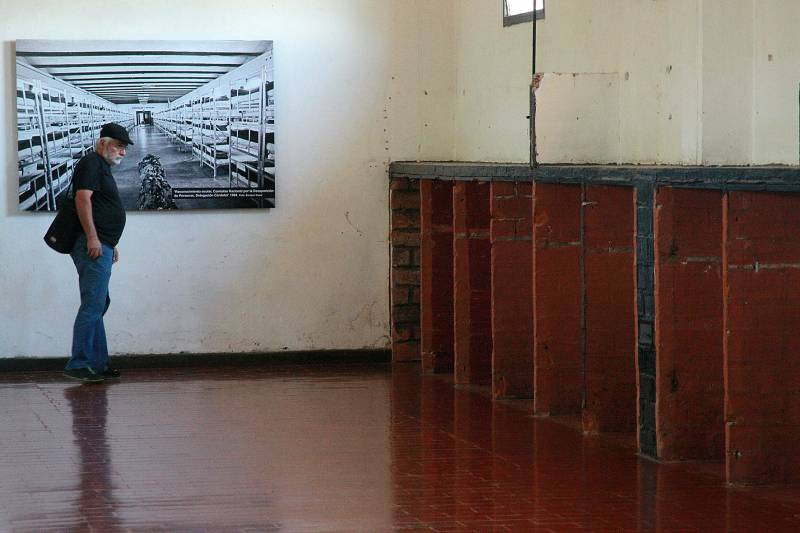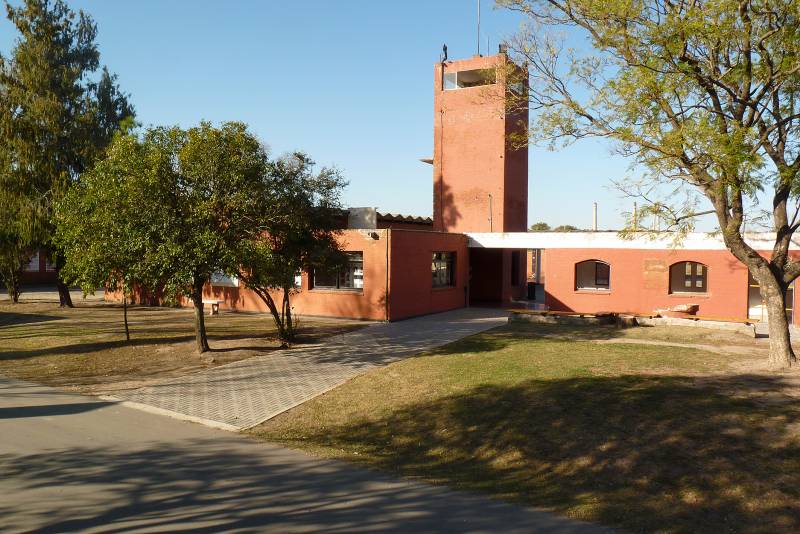“They were betting on staying on power. The 78 World Cup, the national team winning, that was very convenient, but it wasn’t enough. So they started the Beagle Channel conflict with Chile. ‘Now we gotta win the Beagle World Cup’, they said. And then the Malvinas War... And that’s when their end came”, summarizes Héctor Kunzmann, one of the seventeen prisoners who managed to survive the La Perla concentration camp, in which 2500 people disappeared.
“By that time there weren’t many of us in the camp —Kunzmann recounts—. They had taken a group hostage, just in case something happened during the games, to the La Ribera concentration camp. They left the rest of us in La Perla and they took us to the stadium so we could "lanchear". This was a torture all in itself: they took you to the games so you could point out people, acquaintances (that’s what lancheo means in the jargon of the repressors). And if you didn’t point them out, they were paying attention in case someone got close and said hi to you. If that happened they took the poor guy to La Perla”.
—Do you remember what happened when they took you?
—Yeah, it was the Scotland-Peru match. I even remember how it ended: Peru won 3 to 1. They took me with my then partner, Mirta Iriondo. Gino Padován was the one who took us (the repressor Orestes “Gino” Padován). Everything was distressing: you wanted to be invisible so no one could see you, sp no one could get close and greet you. That was the terrifying thing about lancheos: the fear that some friend, some buddy from the neighbourhood or from militancy would end up in a concentration camp just for saying hi to you. Luckily it didn’t happen for us. Everybody was watching the game. I remember they took us in a Dodge 1500 taken from the garage where they made me fix the cars they got (out of car manufacturers in Córdoba or stolen from the streets, as declared by many during the La Perla-Campo de La Ribera megcause).
 Archivo Fotográfico Espacio para la Memoria La Perla.
Archivo Fotográfico Espacio para la Memoria La Perla.
The construction of the five buildings that make up the concentration and extermination camp of La Perla was linked, in a way, to the election of Córdoba as one of the secondary venus of the 78 World Cup. The military arranged for the building of a highway that would connect the city of Córdoba with Carlos Paz, besides the “Chateau Carreras” Stadium: to present a good image to the world was just as much of a priority as it was to deny what they and the complicit press labelled the “anti-Argentina campaign”.
As the writer Ana Mariani and the journalist Alejo Gómez Jacobo revealed in their book La Perla. Historia y testimonios de un campo de concentración, the companies Caruso S.A. And Vimeco S.A. were in charge of the works. Carlos Caruso, one of the builders, detailed that “the highway was built in part in terrains donated by the 3rd Army Corps (that was under the responsibility of mass-murderer Luciano Benjamín Menéndez) and in part in private terrain that they expropriated somewhere around the Alta Gracia access”.
The construction began from Córdoba to Carlos Paz. “The ‘deal’ with the National Road Administration, that consisted of a contract, included as compensation for the giving of the terrain to the Army the construction of ‘a little house’ on the right side of the route (...) metres after the bridge that takes you to Malagueño”. The little house in question ended up being La Perla.
Years later, Caruso along with other engineers like Carlo Pez of Vimeco, agreed that “that place was compensation for the terrains given by the Third Corps. It was included in the contract we signed in 1972. A building that would serve as administration for the whole of the garrison field”. And they washed their hands off the whole thing: “Afterwards... The fact that the military used it for other purposes...”.
 Archivo Fotográfico Espacio para la Memoria La Perla
Archivo Fotográfico Espacio para la Memoria La Perla
They weren’t the only ones to ascertain responsibilities. Or to not want to see. Anyone who lived in Córdoba during the civil-military dictatorship and had passed by La Perla on those years, knew that some “terrible things” took place there. That if they passed by, they couldn’t stop, “or else the sentinel would open fire”.
Coming back from the mountain range after a Sunday in the country had the additive of choosing a way back: by the highway where La Perla was; or by the Way to La Calera, where there the buildings with red roofs and the pines of the 3rd Army Corps were. In any case you had to slow your pace and, if it was already night time, turn on the car’s internal light so the soldiers could see everyone who was travelling. You had to stay very quiet until you got out of the “military area”.
I remember my dad tense, inclined over the steering wheel of his 4S Renoleta, when after the long guns and the helmets of “the milicos”, after going through the military area, told the five little kids we were: “Ok, kids, you can move now, it’s over”. And he turned off the light on the side of the rear-view mirror. A light that, to us, immersed in an armed State, meant that while they looked at us from outside, if there was something they didn’t like, they could shoot us.